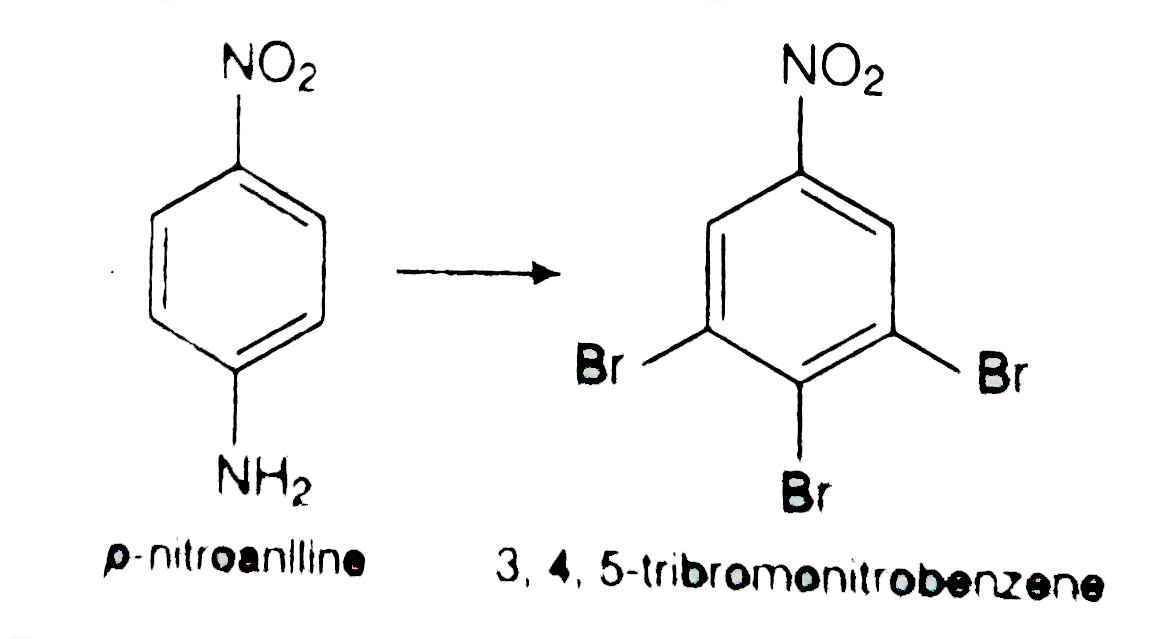How will you bring about the following conversions :
Ethanoic acid to propanoic acid
To convert ethanoic acid (acetic acid) to propanoic acid, we can follow these steps:
Step 1: Reduction of Ethanoic Acid
- Start with ethanoic acid (CH₃COOH).
- Reduce ethanoic acid using lithium aluminium hydride (LiAlH₄) in an ether solvent. This reduction converts the carboxylic acid group (-COOH) to an alcohol group (-OH), resulting in the formation of ethanol (CH₃CH₂OH).
Reaction:
CH3COOHLiAlH4/ether−−−−−−−−→CH3CH2OH
Step 2: Conversion of Alcohol to Alkyl Halide
- Ethanol (CH₃CH₂OH) is then treated with phosphorus pentachloride (PCl₅). This reagent converts the alcohol into an alkyl chloride, specifically ethyl chloride (CH₃CH₂Cl).
Reaction:
CH3CH2OHPCl5−−−→CH3CH2Cl
Step 3: Nitrile Formation
- Ethyl chloride (CH₃CH₂Cl) is reacted with ethanolic sodium cyanide (NaCN in ethanol). This reaction introduces a cyanide group (-CN), resulting in the formation of propanenitrile (CH₃CH₂CN).
Reaction:
CH3CH2ClNaCN (ethanol)−−−−−−−−−→CH3CH2CN
Step 4: Hydrolysis of Nitrile
- Finally, propanenitrile (CH₃CH₂CN) undergoes acidic hydrolysis. This process converts the nitrile group (-CN) into a carboxylic acid group (-COOH), yielding propanoic acid (CH₃CH₂COOH).
Reaction:
CH3CH2CNH+/H2O−−−−−→CH3CH2COOH
Final Product
- The final product of this sequence of reactions is propanoic acid (CH₃CH₂COOH).
Summary of Steps:
1. Ethanoic acid → Ethanol (via reduction with LiAlH₄)
2. Ethanol → Ethyl chloride (via reaction with PCl₅)
3. Ethyl chloride → Propanenitrile (via reaction with NaCN)
4. Propanenitrile → Propanoic acid (via acidic hydrolysis)
---
- Start with ethanoic acid (CH₃COOH).
- Reduce ethanoic acid using lithium aluminium hydride (LiAlH₄) in an ether solvent. This reduction converts the carboxylic acid group (-COOH) to an alcohol group (-OH), resulting in the formation of ethanol (CH₃CH₂OH).
CH3COOHLiAlH4/ether−−−−−−−−→CH3CH2OH
- Ethanol (CH₃CH₂OH) is then treated with phosphorus pentachloride (PCl₅). This reagent converts the alcohol into an alkyl chloride, specifically ethyl chloride (CH₃CH₂Cl).
CH3CH2OHPCl5−−−→CH3CH2Cl
- Ethyl chloride (CH₃CH₂Cl) is reacted with ethanolic sodium cyanide (NaCN in ethanol). This reaction introduces a cyanide group (-CN), resulting in the formation of propanenitrile (CH₃CH₂CN).
CH3CH2ClNaCN (ethanol)−−−−−−−−−→CH3CH2CN
- Finally, propanenitrile (CH₃CH₂CN) undergoes acidic hydrolysis. This process converts the nitrile group (-CN) into a carboxylic acid group (-COOH), yielding propanoic acid (CH₃CH₂COOH).
CH3CH2CNH+/H2O−−−−−→CH3CH2COOH
- The final product of this sequence of reactions is propanoic acid (CH₃CH₂COOH).
1. Ethanoic acid → Ethanol (via reduction with LiAlH₄)
2. Ethanol → Ethyl chloride (via reaction with PCl₅)
3. Ethyl chloride → Propanenitrile (via reaction with NaCN)
4. Propanenitrile → Propanoic acid (via acidic hydrolysis)
Topper's Solved these Questions
- ALDEHYDES, KETONES AND CARBOXYLIC ACIDSBook:ICSEChapter:ALDEHYDES, KETONES AND CARBOXYLIC ACIDSExercise:ISC EXAMINATION QUESTIONS (PART-II DESCRIPTIVE QUESTIONS) (CARBOXYLIC ACIDS)
Explore 99 Videos
- ALCOHOLS, PHENOLS AND ETHERS Book:ICSEChapter:ALCOHOLS, PHENOLS AND ETHERS Exercise:ISC EXAMINATION QUESTIONS
Explore 25 Videos
- APPENDIX II ( TYPICAL CONVERSIONS)Book:ICSEChapter:APPENDIX II ( TYPICAL CONVERSIONS)Exercise:AROMATIC CONVERSIONS
Explore 98 Videos
Similar Questions
How will you bring out the following conversion?

View SolutionHow will you bring about the following conversions :
Propanoic acid to lactic acid
View SolutionHow will you bring about the following conversions :
Acetic acid to glycine
View SolutionHow will you bring about the following conversions?
Ethanol to ethanoic acid
View SolutionBring about the following conversions :
Ethanoic acid to acetic anhydride
View SolutionHow will you bring about the following conversions?
Acetic acid to ethane
View SolutionHow will you bring about the following conversions :
Acetic acid to methylamine
View SolutionHow will you bring about the following conversions?
Propanoic acid to acetic acid
View SolutionBring about the following conversion :
Ethane to ethanoic acid
View SolutionBring about the following conversion :
Ethanol to acetic acid
View Solution
